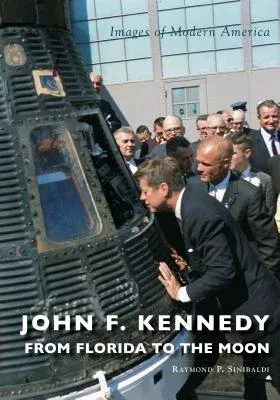Raymond P Sinibaldi
(Author)John F. Kennedy: From Florida to the MoonPaperback, 1 July 2019

Qty
1
Turbo
Ships in 2 - 3 days
In Stock
Free Delivery
Cash on Delivery
15 Days
Free Returns
Secure Checkout

Part of Series
Images of Modern America
Print Length
96 pages
Language
English
Publisher
Arcadia Publishing (SC)
Date Published
1 Jul 2019
ISBN-10
1467103063
ISBN-13
9781467103060
Description
Product Details
Author:
Book Format:
Paperback
Country of Origin:
US
Date Published:
1 July 2019
Dimensions:
23.37 x
16.26 x
1.02 cm
ISBN-10:
1467103063
ISBN-13:
9781467103060
Language:
English
Pages:
96
Publisher:
Series:
Weight:
294.83 gm